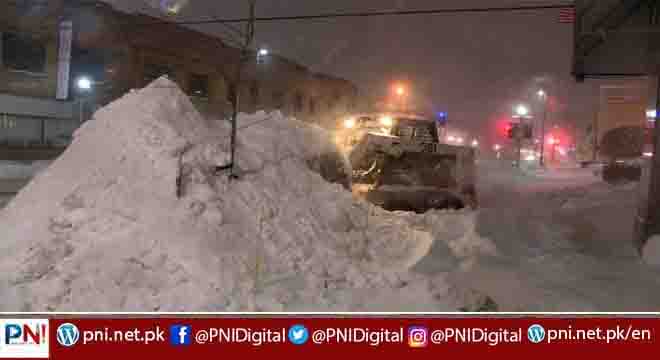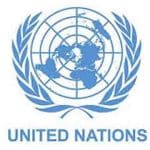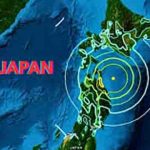New York, Dec 24 (AFP/APP):A fearsome winter storm that pummelled the United States with blinding snow and powerful Arctic winds left 1.7 million customers without power Saturday as thousands of cancelled flights stranded travelers making last-minute dashes for Christmas.
At least 13 storm-related deaths have been confirmed across six states as heavy snow, howling winds and dangerously frigid temperatures kept much of the nation, including the normally temperate south, in a frozen grip for a third straight day.
The “bomb cyclone” winter storm, one of the fiercest in decades, had already forced the cancellation of more than 1,900 US flights on Saturday, a day after nearly 6,000 were scrapped, according to tracking website Flightaware.com.
Cancellations left stranded travelers at airports including Atlanta, Chicago, Denver, Detroit and New York hoping for a pre-Christmas flight rebooking miracle.
Travellers like Zack Cuyler, whose flight to home to Houston on December 22 has been postponed then cancelled twice this week already, were “pretty steamed” about the chaos.
The 35-year-old, who lives in New York City, now hopes to reach his family by Christmas day.
“I’m just glad I’ll get to see my family for Christmas,” he told AFP.
In hard-hit New York state, Governor Kathy Hochul deployed the National Guard to Erie County and its main city Buffalo, where authorities said emergency services have essentially collapsed in the face of extreme blizzard conditions.
“There are still likely hundreds of people still stuck in vehicles,” Erie County Executive Mark Poloncarz said early Saturday, adding that the National Guard was being sent “right into the city of Buffalo for these life-threatening rescues.”
Road ice and white-out conditions also led to the closure of some of the nation’s busiest transport routes, including the cross-country Interstate 70, parts of which were temporarily shut down in Colorado and Kansas.
Over 200 million Americans were under weather warnings Friday as wind chills sent temperatures plunging to as low as -55 Fahrenheit (-48 Celsius), according to the National Weather Service (NWS).
While the number of people under severe weather warnings dropped substantially Saturday, authorities were still warning about lethal conditions and urging residents to remain indoors.
The biting cold is an immediate concern for the more than 1.7 million electricity customers who were without power, according to tracker poweroutage.us.
Some cities, including in the state of North Carolina, began implementing rolling blackouts due to high power demand, in some cases leaving people unable to safely heat their homes.
– Cold-weather outreach –
In El Paso, Texas, desperate migrants who had crossed from Mexico huddled for warmth in churches, schools and a civic center, Rosa Falcon, a school teacher and volunteer told AFP.
But some still chose to stay outside in frigid temperatures because they feared attention from immigration authorities, she added.
In Chicago, Burke Patten of Night Ministry, a nonprofit dedicated to helping the homeless, said: “We’ve been handing out cold weather gear, including coats, hats, gloves, thermal underwear, blankets and sleeping bags, along with hand and foot warmers.”
The National Weather Service forecast early Saturday that dangerously cold conditions would continue throughout the central and eastern United States over the weekend before temperatures returned to more normal seasonal weather next week.
In Canada some were taking the biting cold in their stride, including stoic last-minute holiday shoppers in downtown Toronto.
Jennifer Campbell, of Caledon, Ontario, told AFP: “I think every few years we get some big storms and we just adjust. We are Canadians, that’s the way we do it.”
Canadian provinces have nonetheless issued severe weather warnings. Hundreds of thousands were left without power in Ontario and Quebec, while many flights were cancelled at airports in Vancouver, Toronto and Montreal.
– Flooding, fierce winds –
In the US, transportation departments in several plains states reported near-zero visibility whiteouts, ice-covered roads and blizzard conditions, and strongly urged residents to stay home.
Drivers were being warned not to take to the roads — even as the nation reached what is usually its busiest time of year for travel.
By Friday afternoon, the storm had acquired the status of “bomb cyclone” after air pressure dropped precipitously over 24 hours.
Bomb cyclones produce heavy rain or snow. They can also cause flooding at coasts, and generate hurricane-force wind.
Meteorologist Kelsey McEwen in Toronto tweeted that waves of up to 26 feet (eight meters) have been reported in Lake Erie, while in Ohio’s Fairport Harbor, winds gusted to 74 miles (120 kilometers) per hour, the NWS tweeted.
Follow the PNI Facebook page for the latest news and updates.








